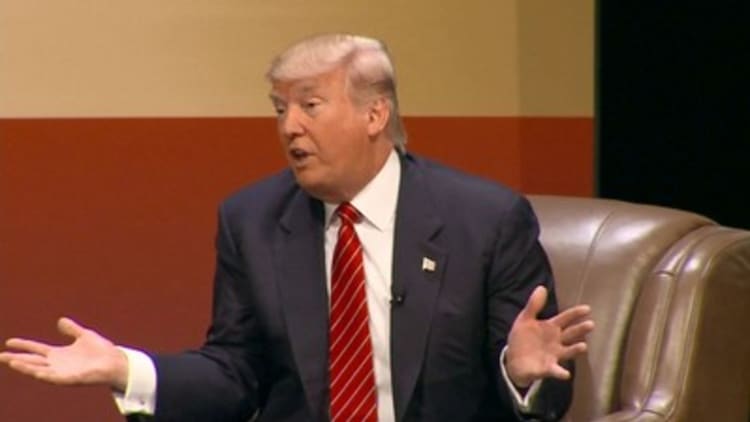
In the course of just a couple of days, things have gotten a lot more complicated for the Federal Reserve.
Late last week, when the July jobs numbers came in right around market expectations, expectations surged that the U.S. central bank in September would enact its first rate hike in more than nine years.
Now, things have changed.
Darkening global deflation clouds have begun to form while China has moved to devalue its currency just as the Fed apparently was about to strengthen the U.S. dollar. Meanwhile, flatlining productivity at home has caused economists to ruminate over growth that may not be anywhere near the 3 percent aspirations held by the Fed and Wall Street experts.
Read More This is 'more damaging...than the Great Recession'
Consequently, traders who bet on the movement of fed fund futures have changed direction. A week ago, the CME Group FedWatch tool had assigned a better than 50 percent chance of a rate hike next month. However, the latest wagering has the probability down to 39 percent, with the strongest chance of liftoff in 2015 not coming until December, which now has a 66 percent chance.
The change reflects a continuing level of uncertainty regarding a Fed that has kept its key rate anchored near crisis levels well after the crisis has passed.
"We are not in an emergency situation. Where rates are now is indicative of an emergency," said Quincy Krosby, market strategist at Prudential Financial. "The Fed right now is thinking, why are we keeping rates this low for this long?"
China's devaluation, though, presents a quandary: How do you hike rates and thus strengthen your currency in a slow-growth climate where all of your global competitors are weakening theirs?
Indeed, it may be anticipation that the Fed is about to hike that gave China the green light to go ahead and devalue its currency, a move that met with approval from the International Monetary Fund, which wants to see a yuan that is more in tune with market movements.
Read MoreSchiff: America is in a 'race to the bottom'
Over the past day or two, many Wall Street economists and strategists have issued analyses that essentially stick to calls for a September hike. Goldman Sachs is one of the few firms that sees a December hike as more likely.
"Besides reading the tea leaves, we also see more fundamental reasons why the Fed may want to wait past September," Goldman economists Jan Hatzius and Sven Jari Stehn said in a note. "One is the asymmetric risk of tightening too early vs. too late. But another one is the recent tightening in financial conditions, which is due to dollar appreciation, higher long-term interest rates, and wider credit spreads."
Traders on Wednesday made moves that reflected a Fed on hold.
Treasury yields continued their march lower, with the benchmark 10-year note trading around 2.11 percent after peaking at 2.48 percent as recently as June 10. The U.S. dollar dropped more than 1.1 percent against a trade-weighted basket of global competitors, though it is up 6.5 percent year to date. The greenback gained nearly 1 percent against the yuan, despite China's announcing overnight that it would sell dollars to prevent too much downside to its currency.
"Things can change by September. The Fed has no magic crystal ball, no more than the market," Krosby said. "The 10-year yield is telling you no rate hike in September. But that can change, and it can change quickly."






